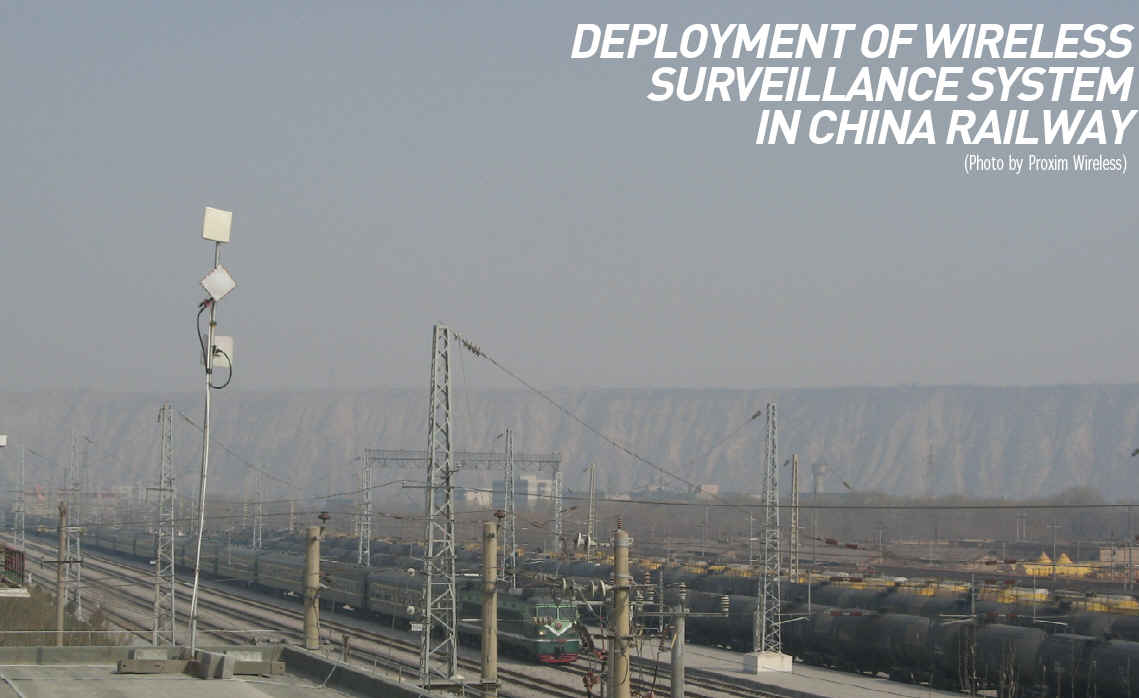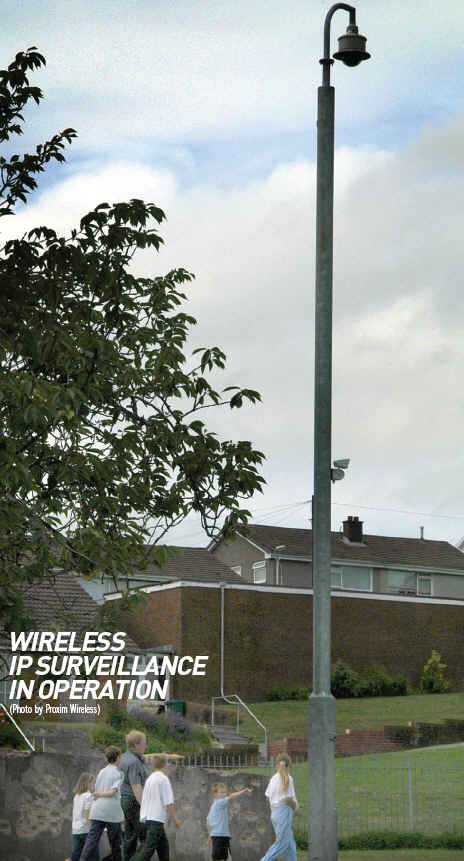
By Joshua Chao
To achieve effective IP surveillance, it is necessary to deliver high quality video images with secure access and fast response in covert applications with reduced Capex & Opex. It is also beneficial to consider which requirements will be the most necessary in the future and build those into the solution.
DEPLOYING WIRELESS
One of the core benefits of deploying a wireless network to support surveillance applications is its adaptability. By building a network with an eye for the future it can be adapted to support new applications, new demands and new requirements and this can be done by deploying wireless technologies that are the best fit for this purpose. Wireless is a scalable technology enabling support for multiple applications, which local authorities are demanding more regularly in order to stretch their budgets and deliver greater value from their investment. Using VLANs, VPNs and other techniques you can segment the network to different applications for a diverse set of clients.
WIRELESS ADVANTAGES
There are a number of significant advantages for using wireless to support surveillance: Networks can be built or extended with a reduced investment in Capex costs ? no trenching or major disruptive roadworks. Likewise there¡¯s a reduction in Opex costs with a reduced requirement for dedicated lines to service multiple installation locations. With the emergence of smart handsets and Ultra-Mobile PCs (UMPCs) secure mobile connectivity is another advantage that wireless brings. Being able to view footage on a PDA in a security patrol vehicle can provide important information at the point of an incident ? without the need to return to a control center. And all of this is possible without making a phone/cellular connection. In this respect, wireless broadband has come of age and brings significant new benefits.

Photo by Proxim Wireless
THE TECHNOLOGIES
In order to build these scalable, robust and secure solu- tions, it¡¯s important to use industrybased technologies: Point-to-point; pointto-multipoint/WiMAX; Mesh; and Wi-Fi.
Point-to-point
Point-to-point radios have been used by carriers and enterprises for some time. They can offer a lot of benefits: extend the network reach with high capacity or long links add resilience to or reduce dependency on leased lines; connect point A to point B effectively and securely. Typical of the solutions available today, network interconnections are as easy as an RJ-45 or fiber connection. Point-to-Point is an affordable and straightforward means of extending reach without increasing Opex. Once the network extends from point A to point B, it is then time to build out the infrastructure to support the relevant applications.
Point-to-Multipoint/WiMAX
Multi-Point networks help to extend the infrastructure from one point of presence to many -- to create an umbrella infrastructure to support the applications. This umbrella establishes a sector of nodes that may connect more buildings e.g., a business park or residences to a rural ISP. In a city center the nodes may be additional camera locations that were previously uneconomical due to trenching costs. The Multi-Point architecture typically works in sectors to provide dedicated support to a number of node locations in the coverage area. Each of the nodes delivers a connection to an IP network -- commonly RJ45 -- to enable IP cameras, IP signage and mesh nodes to be added. An IEEE standard now exists for licensed Multi-Point technology called 802.16 and WiMAX is the certification body that is qualifying and approving interoperability and performance of licensed Multi-Point products. Unlicensed Multi-Point solutions share many of the same features and functions as licensed WiMAX solutions but have additional technology that allows them to co-exist and work effectively in an unlicensed unregulated band.
Mesh
Mesh is a great technology, often misunderstood and oversold. Mesh brings another solution for deploying networks within cities and towns. The approach with Multi-Point is often a rooftop or tower covering a zone of nodes, whereas mesh is a bit more organic, often utilizing street furniture or building facades to deploy nodes every several hundred meters. Mesh is best delivered over systems with two or more radios -- ¡®mesh backhaul¡¯ is where one radio is dedicated to the mesh interconnection (or hops) and the other can be used to support client devices, usually over Wi-Fi. To keep the mesh effective every so often it needs to tap into the network backbone -- either DSL or better still a Multi-Point or Point-to-Point PoP. Without this, the actual level of throughput the mesh can carry will degrade, which will have an adverse affect on applications. A good mesh is supported by a good backbone, and this delivers scale and the ability to support many client devices. The best way to think of Mesh is as a Wi-Fi access technology that also allows you to easily extend your network to areas your Multi-Point network cant reach.
Wi-Fi
Wi-Fi is the ubiquitous broadband wireless standard and plays a significant role in the proposition. Affordable, flexible and proven, Wi-Fi is by far and away one of the most common communication protocols in use today. Simply put, almost every gadget has Wi-Fi on board. Sometimes derided due to security misconceptions, Wi-Fi needs to be used sensibly. Good security practices need to be put in place, proper authentication and network management techniques need to be implemented. Wi-Fi has the capability to deliver an open access solution alongside a secure one and if a surveillance network is designed properly there will be excess capacity available for public Internet access, if so desired. For all that is written about WiMAX, Wi-Fi is not dead and it¡¯s not going away. 95% of all laptops shipping today include Wi-Fi and every cellular phone manufacturer now has at least one Wi-Fi phone. It¡¯s easier to add another radio and the software to support it than to get users to throw away their laptops and home wireless with the promise of another breakthrough technology. Plus, the evolution towards 802.11n will bring other features and benefits for wireless broadband as well as 10x the capacity of WiMAX and 3G.

Photo by Proxim Wireless
A wireless network must deliver scalability, security, resilience, flexibility, IP standards and connectivity. But to deliver them effectively on a large scale demands an open minded review of requirements, budgets, schedules and future considerations. A wireless security solution simply leaps over any barriers, allowing a virtually unlimited number of video surveillance cameras to be deployed quickly, easily and costeffectively. In a new or expanded security system, high resolution, real-time video from each security camera is transmitted directly to a wireless base station in a regional security center or onsite security office where the wireless network remotely controls the cameras. IP surveillance solutions are now being used for numerous applications in a wide array of sectors: government, retail, transportation, banking & finance and education. All of these sectors have growing needs for security and surveillance. Broadband wireless has evolved to meet these challenges and is now being recognized as the smartest way to support surveillance applications.

Joshua Chao is VP Asia Pacific Sales of Proxim Wireless (http://www.proxim.com/).
For more information, please send your e-mails to swm@infothe.com.
¨Ï2007 www.SecurityWorldMag.com. All rights reserved.
|



